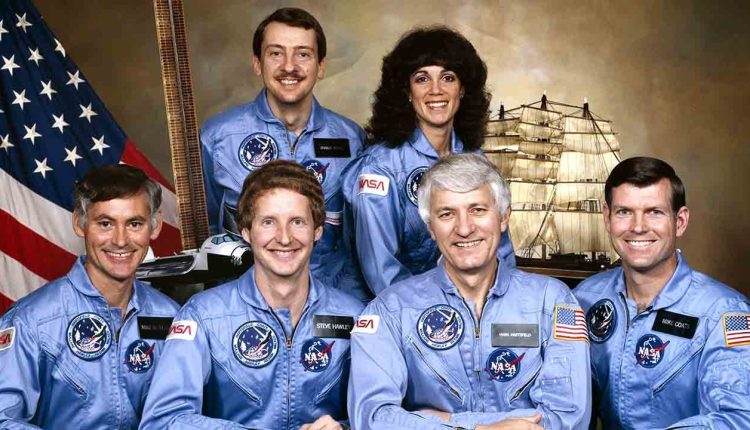The Space Shuttle Discovery took off on its maiden voyage on this day in history, Aug.30, 1984.
For Discovery, the fourth time was the charm: The previous three launch attempts were scrubbed, with one canceled just six seconds before liftoff.
That aborted launch — the first of its kind for the Space Shuttle program — occurred on June 26, 1984. The mission was called off after an issue was discovered with one of the main engines.
ON THIS DAY IN HISTORY, AUGUST 29, 2005, HURRICANE KATRINA SLAMS INTO GULF COAST, CAUSING MASSIVE DAMAGE
After a two-month delay, Discovery returned to the launch pad on August 29; that launch, too, was scrubbed.
Discovery finally blasted off from Kennedy Space Center on August 30.
That initial mission, STS-41-D, had six people aboard: Commander Henry W. Hartsfield, Jr., Pilot Michael L. Coats, Mission Specialists Richard M. Mullane, Steven A. Hawley, and Judith Resnik, and Payload Specialist Charles D. Walker.
Walker, who worked for the aerospace company McDonnell Douglas, was the first commercially sponsored payload specialist to ride on the Space Shuttle.
It was the first trip into space for everyone except Hartsfield, who was making his initial spaceflight.
All would return to space, except for Resnik.
ON THIS DAY IN HISTORY, JAN. 28, 1986, SPACE SHUTTLE CHALLENGER EXPLODES, SHOCKING THE NATION
Resnik was one of the seven astronauts killed in the Space Shuttle Challenger disaster on Jan. 28, 1986.
Despite its troubled beginnings, the six-day mission of STS-41-D went off relatively smoothly, said NASA’s website.
“Three satellites deployed during this mission: Satellite Business System SBS-D, SYNCOM IV-2 (also known as LEASAT2) and TELSTAR,” said NASA.
Additionally, there was a successful test of a solar wing, and other experiments were conducted during the mission.
MEET THE AMERICAN WHO REPORTED THE FIRST SENSATIONAL UFO ENCOUNTERS, PURITAN LEADER JOHN WINTHROP
Discovery landed safely at Edwards Air Force Base in California on Sept. 5, after making 97 revolutions around the planet and traveling a total of 2.5 million miles.
During its 27 years in service, Discovery flew 39 flights.
NASA donated Discovery to the National Air and Space Museum.
One of its notable missions was the deployment of the Hubble Space Telescope, as well as the launch of the Ulysses spacecraft that explored the sun, said NASA.
Discovery took her final flight, STS-133, on Feb. 24, 2011, carrying astronauts Steven W. Lindsey, Eric A. Boe, Nicole M. P. Stott, Alvin Drew, Michael R. Barratt and Stephen G. Bowen into space for nearly 13 days.
After its safe return to earth, Discovery was decommissioned, as were the other remaining space shuttles at the conclusion of the Space Shuttle Program.
The final space shuttle mission, STS-135, saw Atlantis return to earth on July 21, 2011.
Discovery was the third of the original five Space shuttle orbiters, and the oldest remaining shuttle at the time of its decommission.
NASA’s Space Shuttle program consisted of six reusable orbiters: Enterprise, Columbia, Challenger, Discovery, Atlantis and Endeavour.
Space Shuttle Enterprise never flew into space and was only for testing purposes; Columbia and Challenger were both destroyed in accidents.
Following its decommission, NASA donated Discovery to the National Air and Space Museum.
It is presently on display at the museum’s Steven F. Udvar-Hazy Center in Chantilly, Virginia.
Read the full article here

